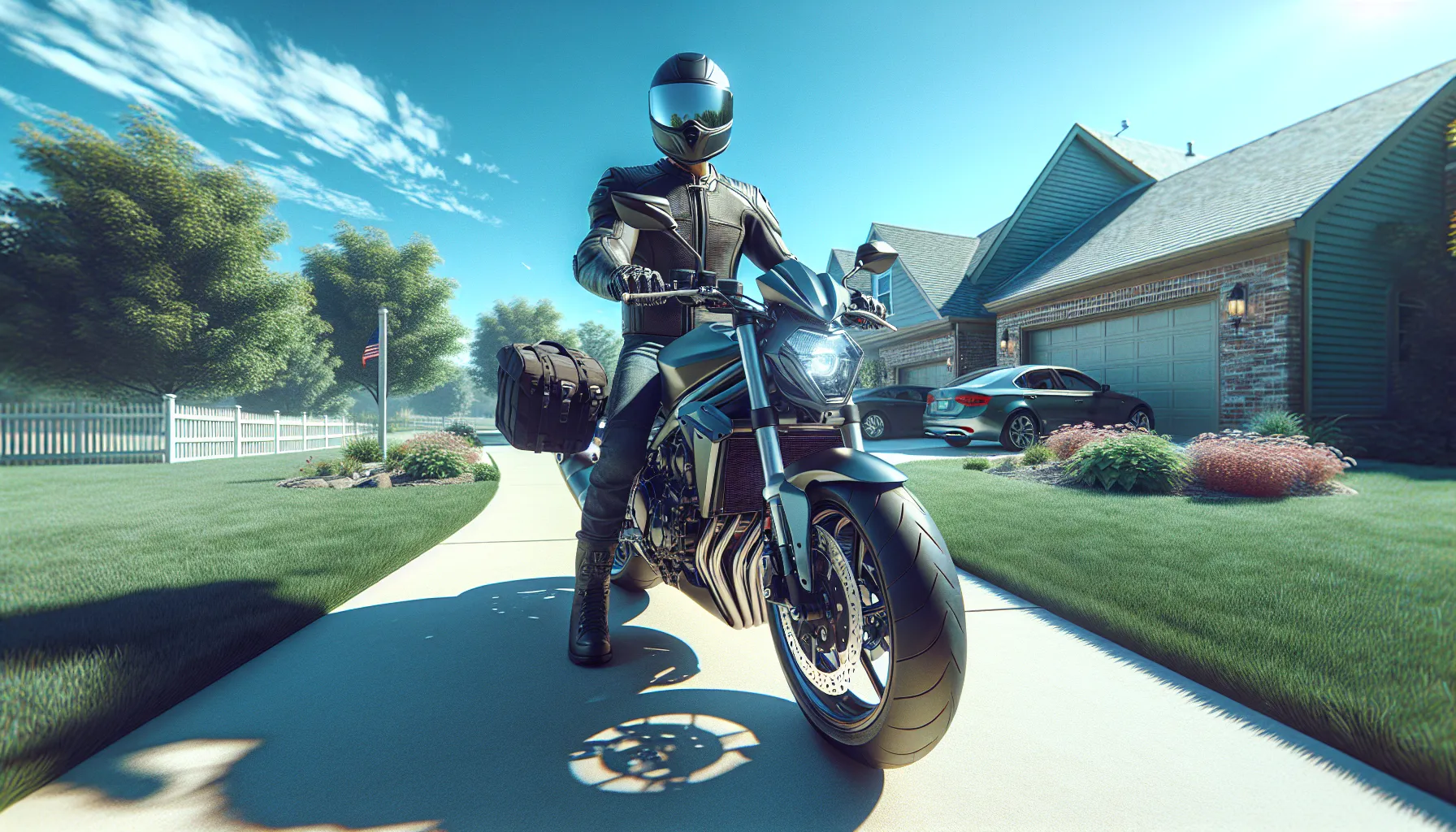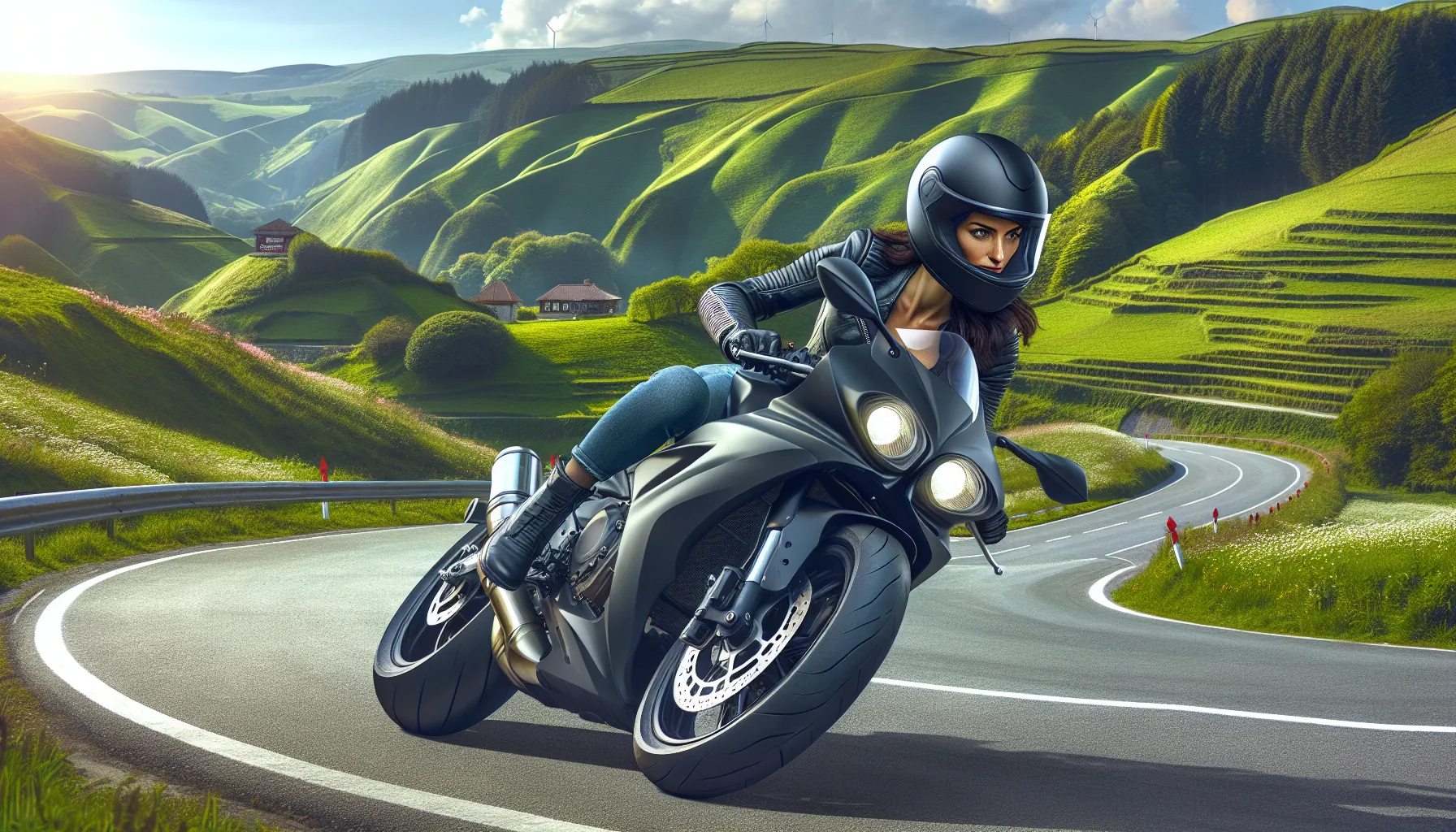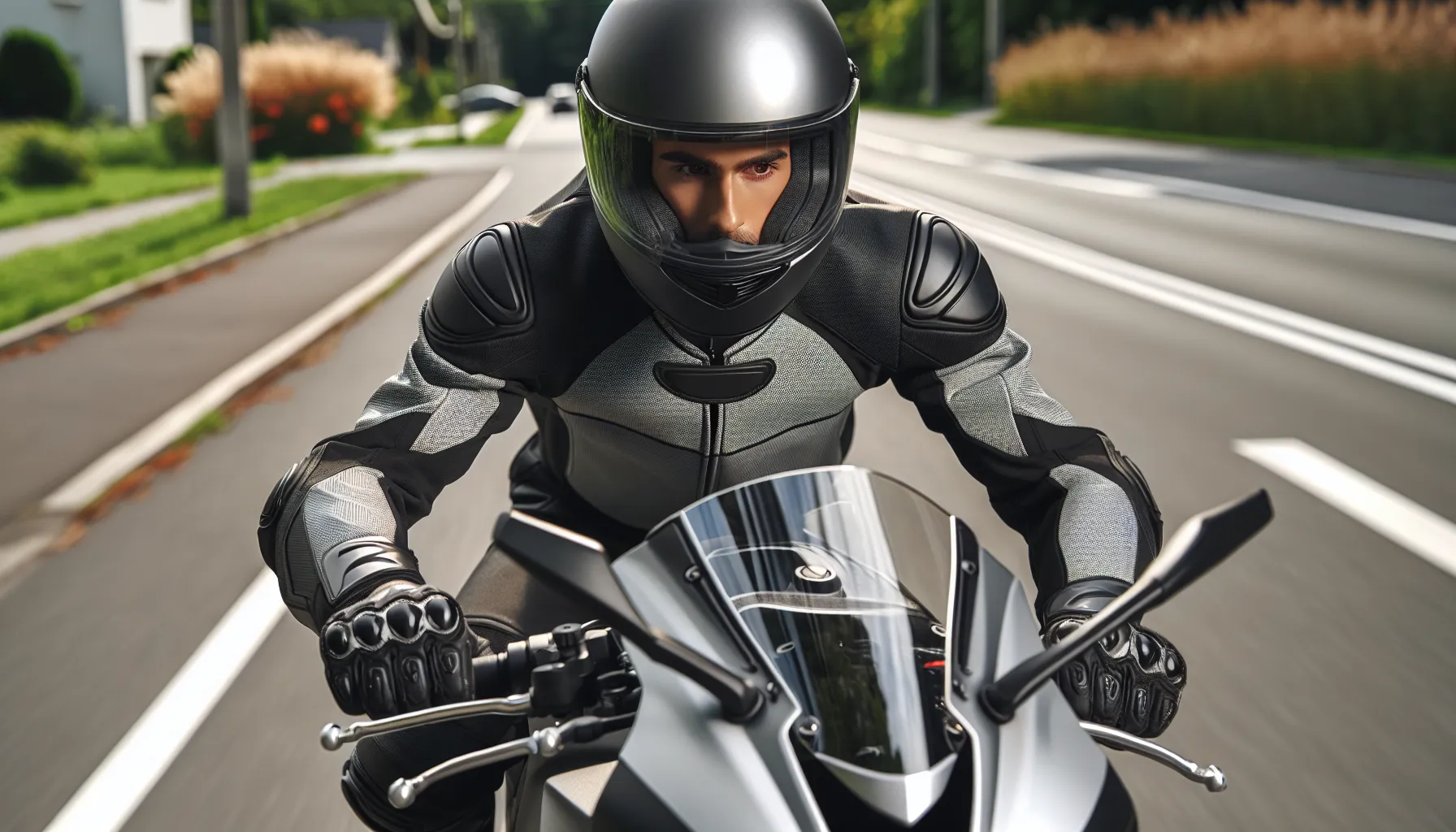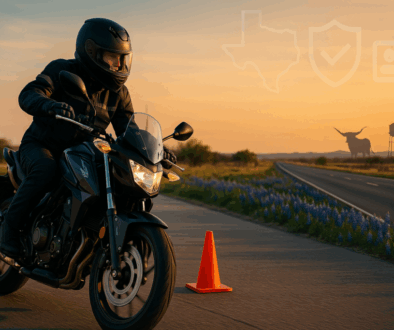How to Ride a Motorcycle: Beginner’s Guide to Safety, Skills, and Confidence
Key Takeaways
- Riding a motorcycle requires mastering key skills, building confidence, and prioritizing safety before hitting the road.
- Selecting the right motorcycle for your size and experience level is vital for comfort, control, and learning ease.
- Understanding motorcycle controls, including throttle, clutch, brakes, and gears, is essential to operate the bike effectively.
- Wearing proper safety gear, such as a DOT-approved helmet, gloves, jacket, and boots, is critical for protection during rides.
- Developing safe riding techniques, like smooth braking, proper cornering, and gear shifting, enhances both safety and overall riding experience.
- Avoiding common mistakes, such as skipping training or neglecting maintenance, ensures safer rides and prolongs the motorcycle’s lifespan.
Riding a motorcycle is one of the most exhilarating experiences I’ve ever had. There’s something about the wind rushing past, the hum of the engine, and the freedom of the open road that’s hard to put into words. But before you dive in, it’s important to know that riding isn’t just about thrill—it’s about skill, safety, and confidence.
I remember how intimidating it felt at first, balancing on two wheels and managing all the controls. But trust me, with the right guidance and a little practice, it becomes second nature. Whether you’re dreaming of weekend rides or planning to make it your daily commute, learning to ride a motorcycle is a journey worth taking. Let’s break it down step by step so you can hit the road with confidence and ease.
Understanding The Basics Of Riding
Starting with the fundamentals makes motorcycle riding more accessible and less intimidating. Getting comfortable with equipment and practicing control is crucial before hitting the road.
Choosing The Right Motorcycle
Picking a motorcycle suited to your needs boosts comfort and confidence. Smaller engine bikes, like a 250cc or 300cc option, are easier to handle for beginners. Ensuring the bike suits your height is essential; both feet should rest flat on the ground when seated. Entry-level motorcycles, such as cruiser or standard models, often offer the best stability and control.
Learning Motorcycle Controls
Familiarity with the controls is a priority for any rider. Key components include the throttle on the right handlebar, the clutch lever on the left, front and rear brakes, a gear shifter, and the ignition system. Practicing clutch-throttle coordination helps avoid stalling during starts and stops. I also found it helpful to practice using both brakes effectively since proper braking ensures safety.
Preparing Safety Gear
Wearing the right gear enhances protection while riding. A DOT-approved helmet safeguards against head injuries. Gloves, a reinforced jacket, riding pants, and sturdy boots provide added safety. Visibility also matters; reflective elements in clothing or helmets make you noticeable to others, especially in low-light conditions.
Getting Started With Riding

Learning to ride a motorcycle begins with mastering the basics. Starting with mounting, engine control, and balancing builds confidence and sets the foundation for smooth rides.
Mounting The Motorcycle
I stand on the left side of the motorcycle, hold the handlebars firmly, and use my left hand to stabilize the front brake. I swing my right leg over the seat carefully, ensuring I don’t kick the bike or lose balance. Once seated, I adjust the mirrors and ensure both feet can touch the ground, keeping at least the balls of my feet planted.
Starting The Engine And Throttle Control
After mounting, I turn the ignition key to “on” and check that the bike’s neutral gear light is illuminated. If it’s not in neutral, I pull the clutch lever and shift to neutral using the gear shifter. I press the start button to ignite the engine while holding the clutch, then gently twist the throttle grip to rev the engine slightly. I practice gradual throttle control in a stationary position to feel how the bike responds before moving.
Balancing And Maneuvering The Bike
To balance, I sit upright with my weight evenly distributed and grip the handlebars lightly. While holding the clutch, I release it slowly while adding a bit of throttle to start moving. I keep my eyes straight ahead to maintain stability and use slight handlebar adjustments for steering. I practice riding in a straight line and making gentle turns to improve my control, focusing on smooth inputs for both balance and maneuvering.
Essential Riding Techniques

Mastering fundamental techniques ensures smoother rides and increases safety. Each skill plays a crucial role in managing your motorcycle effectively.
Turning And Cornering
I focus on looking through the turn to maintain the correct line. Shifting my weight slightly towards the inside of the turn helps with balance. I keep a steady throttle during the curve to avoid unsettling the bike’s stability. When I approach sharper corners, I brake gently before the turn, lean into it, and smoothly regain speed as I exit.
Accelerating And Braking
Smoothness is key when accelerating or braking. I twist the throttle gradually to build speed without jerking forward. For braking, I use both front and rear brakes simultaneously, applying slightly more pressure on the front. When I anticipate stops, I ease the throttle first, then progressively apply the brakes, reducing abrupt movements. This approach reduces the risk of skids, particularly on wet or uneven surfaces.
Shifting Gears Properly
I practice precise timing when shifting gears. To shift up, I roll off the throttle, squeeze the clutch, and use my foot to click the gear lever up. Then, I release the clutch smoothly while rolling back on the throttle. For downshifting, I follow the same steps but press the gear lever down. Proper coordination prevents lurching or stalling. Adjusting to lower gears during deceleration also ensures more control during slower speeds.
Practicing Safe Riding Habits

Riding safely is as important as mastering the basic techniques. I focus on staying alert, following traffic laws, and preparing for unexpected situations to ensure every ride is both enjoyable and secure.
Road Awareness And Observation
Staying aware of my surroundings helps me anticipate potential hazards. I scan the road ahead, checking for debris, potholes, and sudden obstacles. I also keep an eye on other vehicles’ movements, particularly at intersections and lane merges, where accidents are more common. Regularly checking my mirrors and maintaining a safe following distance ensure I’m prepared for sudden stops or swerves.
Following Traffic Rules
Adhering to traffic laws keeps me aligned with other road users. I always observe speed limits, which vary by area and road type. Using signals for turns and lane changes communicates my intentions to others, reducing the chances of collisions. I respect stop signs and red lights, ensuring I avoid fines or dangerous situations at crossings. This disciplined approach allows me to ride with confidence and predictability.
Managing Emergency Situations
Preparing for emergencies equips me to respond quickly under pressure. If I encounter wet or uneven roads, I use gradual braking and maintain a steady grip on the handlebars to avoid losing traction. In case of sudden obstructions, I rely on the counter-steering technique to swerve effectively while keeping control of the bike. Practicing emergency stops helps me halt the motorcycle smoothly without skidding. Staying calm in these scenarios makes all the difference.
Common Mistakes To Avoid
Avoiding mistakes early on helps build better riding habits and keeps you safer on the road. Here are common pitfalls to watch for and how to steer clear of them.
Overconfidence As A Beginner
Starting out, some new riders overestimate their skills after just a few successful rides. While gaining confidence is important, riding without fully mastering basic techniques increases the risk of accidents. I always remind myself to pace my learning and focus on gradual improvement. For example, practicing slow-speed maneuvers in a parking lot helps build control without feeling overly ambitious.
Ignoring Regular Bike Maintenance
Neglecting maintenance can lead to breakdowns or unsafe riding conditions. I make a habit of checking tire pressure, brakes, lights, and fluid levels before heading out. Skipping these checks compromises both safety and bike performance. For instance, riding with under-inflated tires can affect handling and increase stopping distances.
Riding Without Proper Training
Attempting to ride without receiving formal instruction creates unnecessary risks. Even if you’ve studied the controls, practicing under an instructor’s guidance ensures that techniques like emergency braking or cornering are learned correctly. When I first started, a professional course helped me identify and fix mistakes I hadn’t even noticed.
Conclusion
Riding a motorcycle is an incredible journey that blends excitement, skill, and responsibility. It’s not just about the thrill but also about mastering techniques and staying safe on the road. With patience, practice, and the right mindset, anyone can transform from a beginner into a confident rider.
Remember, every rider starts somewhere, so don’t rush the process. Focus on building good habits, stay alert, and always gear up for safety. The open road is waiting, and there’s nothing quite like the freedom of riding with confidence. Enjoy the ride!
Frequently Asked Questions
1. What are the basics of motorcycle riding a beginner should know?
Beginners should start by understanding motorcycle controls like the throttle, clutch, brakes, and gear shifter. Practice clutch-throttle coordination to prevent stalling. Get comfortable with the weight and balance of the bike before riding. Safety gear, such as a DOT-approved helmet and gloves, is essential for protection.
2. What type of motorcycle is best for beginners?
Smaller engine motorcycles, such as 250cc or 300cc models, are ideal for beginners. These bikes are lightweight, easier to handle, and allow new riders to build confidence. Ensure the bike suits your height for better stability.
3. How important is safety gear while riding a motorcycle?
Safety gear is crucial for protecting riders from injuries. Always wear a DOT-approved helmet, gloves, and sturdy clothing. Reflective gear increases visibility and keeps riders safer, especially in low-light conditions.
4. How can I improve my motorcycle balancing and maneuvering skills?
Practice maintaining an upright position and use gentle throttle and brake inputs. Practice slow-speed turns in a safe area to improve balance and control. Regular practice builds confidence and skill.
5. What are the key techniques for safe turning and cornering?
Look through the turn and shift your weight slightly for better balance. Keep a steady throttle and avoid sudden braking while cornering to maintain stability and control.
6. How do I master motorcycle gear shifting?
Coordination is key to smooth gear shifting. Gradually release the clutch while gently applying throttle, timing the shift to avoid lurching or stalling. Practice shifting up and down to build confidence.
7. How do I handle emergency situations while riding?
Stay calm and focused during emergencies. On wet or uneven roads, use smooth inputs to avoid skidding. Practice emergency braking in a controlled environment to maintain control in real scenarios.
8. What are the most common mistakes beginner riders make?
Common mistakes include overconfidence, skipping bike maintenance, and neglecting formal training. Pace your learning, regularly check your bike for issues, and take a training course to develop safe riding habits.
9. How can new riders stay safe on the road?
Stay alert and aware of your surroundings. Follow traffic rules, maintain a safe distance from vehicles, and continuously scan for hazards. Preparation and attentiveness are key to safe riding.
10. Is formal motorcycle training necessary for beginners?
Yes, formal training is highly recommended. It ensures you learn the correct techniques and build better habits from the start. This helps improve safety and confidence as you progress in your riding journey.




